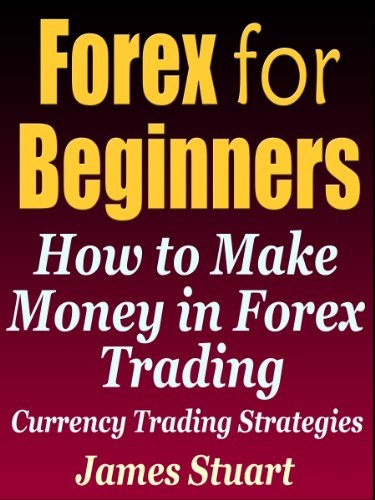Rules Based Forex Trading
Post on: 30 Март, 2015 No Comment

Summary
This article presents a series of rules to incorporate into your forex trade entries. We will start with some basic rules for a simple but effective forex trading system. Then you can increase the number of rules to limit the number of trades and to enhance the results and overall pips captured on a trade by trade basis.
Why Trade The Forex With Rules?
Setting up rules allows you to formulate a method based on those rules and to test the trading method. This is much different than random trade entries. Rules must be specific, not general. With rules you know when to buy or sell, this reduces stress and is a great way for beginner forex traders to proceed.
A rules based trading system means you do not guess or use discretion from trade to trade. Trade entries are not random. You simply follow the rules. The rules you set up should be simple. All traders should avoid complex rules, systems, and indicators that cannot be easily explained.
Rules That Are Faulty and Ineffective
If you set up some rules for entering forex trades and you rigidly follow these rules, the results should be positive trades, pips, and profits. If the results are losses, the rules you set up or the trading system you are following is a faulty system. Abandon the system and set up new rules. Fortunately, you can discover this with demo trading, and no financial risk.
If you start to enter demo forex trades based on your trading rules and you simply cannot make any profitable trades, your system is likely ineffective. The culprit is likely the technical indicators behind the system, because technical indicators proliferate the forex industry and simply do not work.
Forex traders that are using rule based systems now are almost always using technical indicators, so their rules are based on the indicators. This results in frustration and no pips. Move on quickly from the technical indicators and set up rules that do not rely on indicators. Any forex system that uses rules with technical indicators at the foundation will always fail. Setting up trading rules includes eliminating rules that are not providing results. Every forex trader knows technical indicators provide thousands of combinations but the pips are simply not there.
First Rule – Technical Indicators are faulty and provide random trading results, eliminate them from your trading rules.
Second Rule – Demo trade first, then move to micro lots . then continue to scale up to mini lots over time.
Using the simple rules we lay out in this article should turn things around for you, without relying on rules based on technical indicators. This way you can make sure your system is valid before committing any real money and live trading.
A Simple, Effective Rules Based System
When you enter a forex trade you should always follow a set of rules, these rules should be simple, not complicated. Anyone should be able to easily explain their rules to another trader. No “gurus” or complicated systems. Here is an example of a basic set of three entry rules for any trade.
Rule 1 – Trade in the direction of the primary trend on the higher time frames, H4 and larger.
Rule 2 – Only enter trades with no nearby resistance nearby on buys or no nearby support on sells.
Rule 3 – Trade only if one currency is strong or the other one weak or both.
These are three very simple rules that any forex trader can implement almost immediately across many pairs, with no reliance on technical indicators or complicated systems. Anyone can understand these rules. A trader can use simple moving averages to determine the primary trend. Having no nearby support or resistance nearby might be something like 100 pips minimum, or possibly more, and you can write this into your rules. Currency strength or weakness can be easily measured on entry using The Forex Heatmap®. Start testing these rules first by demo trading.
Trading results would improve immediately for any trader who has been struggling by implementing these three rules. These three basic rules can get you started trading with the Forexearlywarning system. Now we can start to investigate some additional rules you can add depending on how strict you want to be.
Additional Trading Rules
Keeping the original 3 rules in place, you can now begin to add additional rules if you wish, and here are some additional rules you should consider.
The Forex Market is a 24 hour market. This does not mean you need to watch the market for 24 hours because most high quality trade entries occur in a much smaller window of time in the main trading session. If you have a busy schedule then you can set up some rules.
Additional Rule – Enter trades in the main trading session in a 4 to 5 hour window of time, where strong movements can occur daily.
Additional Rule – Do not enter a trade unless there is at least 100 pips of upside potential.
This is a good start, you can also increase this to 125 pips or even more on more volatile pairs.
When you are monitoring the forex market, if you see a pair that has been moving for several hours, you missed the move. It could continue moving but you want to catch a fresh movement cycle after consolidation or rest periods. So set up another rule for these situations.
Additional Rule – Only trade a pair when it is starting a new movement after a consolidation or retracement period.
When you are trading with a trend based system, you would prefer to trade near the beginning of a new trend so you can sit back and ride the trend and let the market do the work.
Additional Rule Trade at the beginning of the trend cycle on the higher time frames, H4 and larger.
Beginning Of Forex Trend Cycle
Also, news drivers can move markets and cause stop outs, or additional profits. So you need a set of rules for trading around volatile news drivers.
Additional Rule – When entering a trade make sure strong news drivers are at least one hour away to give you time to move your stop to break even, otherwise exit the trade or wait until after the news to consider a trade.
Sometimes the entire forex market, or groups of currency pairs are trending and moving almost every day. Understanding the condition of the market is important to forex traders and can be incorporated into a rules based system. If many of the pairs and currency groups look choppy on the charts you can set up rules to deal with this problem, like specifying the number of lots traded to be less.
Market conditions change from trending to ranging or choppy and if you can identify this, you can account for this with a new rule. In this case you must be able to identify a choppy market and with techniques like multiple time frame analysis we can do this.
Additional Rule – If you identify a choppy group of pairs or choppy market in general, be prepared to trade less lots or not to trade at all until it clears up.
In order to be able to know the condition of the forex market you need a technique and set of indicators to analyze. We suggest multiple time frame analysis applied to individual currencies. Using these market analysis techniques will always give you a clear view of the current market conditions, trending, ranging, oscillating, choppy.
One rule might be to evaluate the condition of the market and to know if you have some pairs that are trending up or down. Then you can set up rules based on trending pairs, this is like writing a trading plan. You can use multiple time frames across many pairs to know the condition of the market.
Additional Rule – Become proficient at multiple time frame analysis so you can identify the condition of the market across many pairs and currency groups.

Experienced Traders and Loosening The Rules
If a forex trader has 6 months to one year of trading experience and is consistently making positive pips. It is possible to “loosen” some of the trading rules and look for more trading opportunities. Anyone who has successful traded the forex market this long has earned the right to look for more pips.
Experienced traders can look to do short term intra-day trades, trade outside the boundaries of the main trading session, and possibly even trade against the trend. You still need to have rules like the ones we have discussed in this article.
Experienced Traders Rule – If you would like to trade outside of the boundaries of the main session, like in the Asian session . it is not a problem as long as you know the limitations and understand how to limit any additional risks.
Experienced Traders Rule – If a currency pairs trends in one direction for a week or more, but cycles in the other direction it is okay to do a short term trade against the trend.
Experienced Traders Rule – If the entire market is ranging and you would like to do some short term trading trying to make 40-50 pips at a time this is not a problem either, as long as you follow the basic rules we set out in this article.
Experienced Traders Rule Reducing the time frame down to the H1 time frame if the other rules are met or there is a fresh move on the H1 time frame.
Rules Based Money Management
Along with some rules for trade entries you can also have rules for money management. Let’s start with two basic rules of money management then proceed from there.
Money Management Rule Always trade with a stop order.
Money Management Rule – When your trade entry goes into positive pips, like +40-50 pips, scale out half of your lots and move the stop to break even.
Now that you have your basic rules of money management in place you can set additional money management rules if you would like stricter guidelines.
Money Management Rule – Do not enter a trade unless you can possibly get at least 3 pips for each pip you risk.
For example, if you start your trade with a 30 pip stop you must be trying to get at least 100 pips from that trade. This is predetermined risk versus reward ratio.
Money Management Rule – If you identify a choppy market trade less lots or not at all and scale out lots sooner.
You can take money management and profit management even further and develop more rules. Additional rules for profit taking, setting price targets, scaling out additional lots, by checking these resources.
Conclusions
Any forex trader can take this article and develop simple rules for entry and money management. If you apply the 3 basic rules your trade will begin to improve, then start experimenting with more rules to incorporate after you become more experienced and successful. Over time you may occasionally loosen the rules depending on what situation the market presents to you.
To contact Mark Mc Donnell you can email him at Forexearlywarning.com.
3A%2F%2F1.gravatar.com%2Favatar%2Fad516503a11cd5ca435acc9bb6523536%3Fs%3D60&r=G /%














